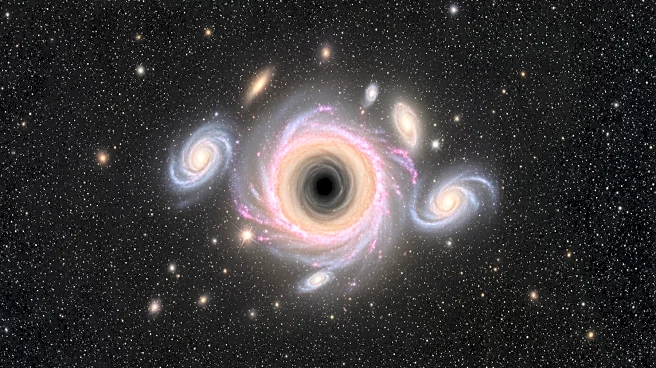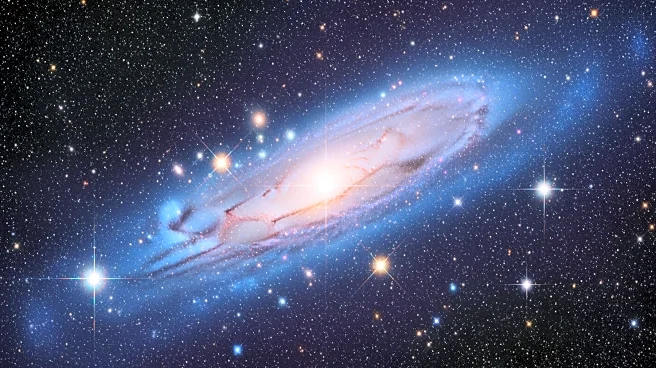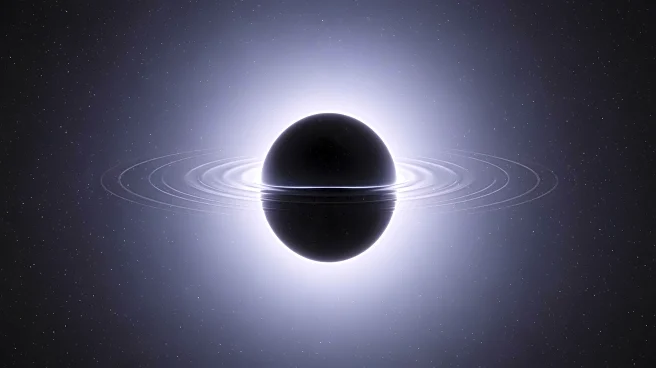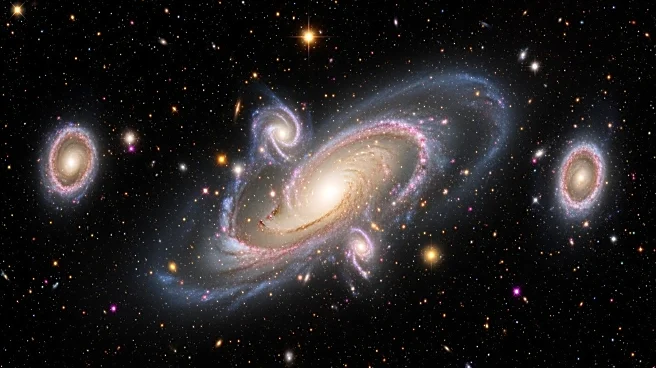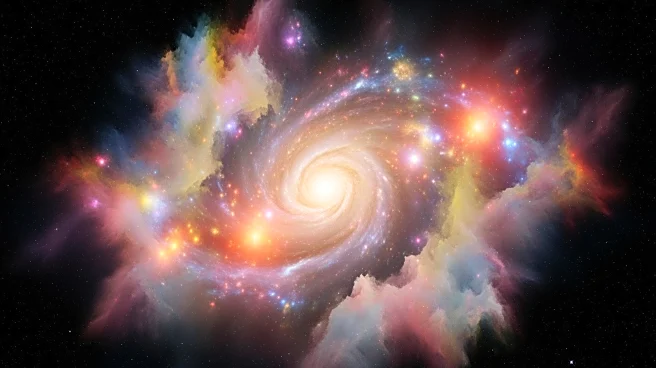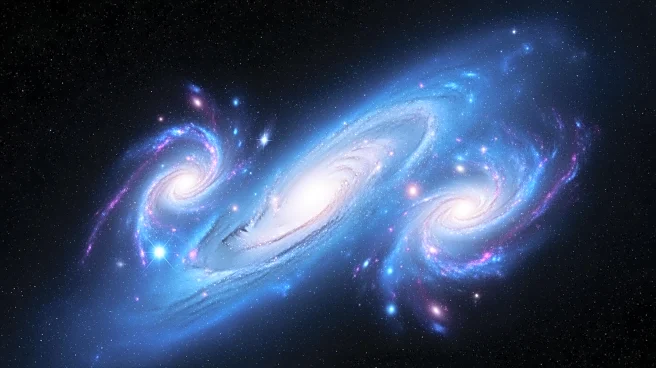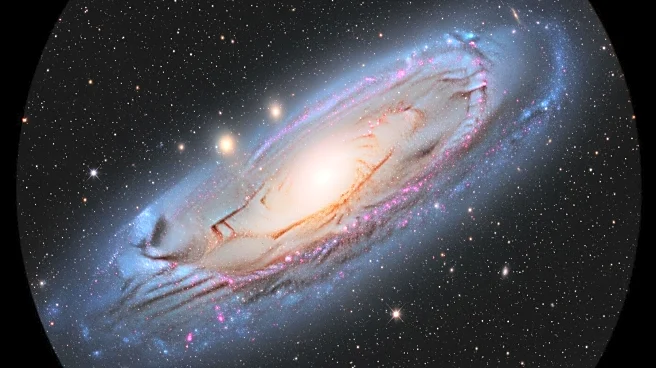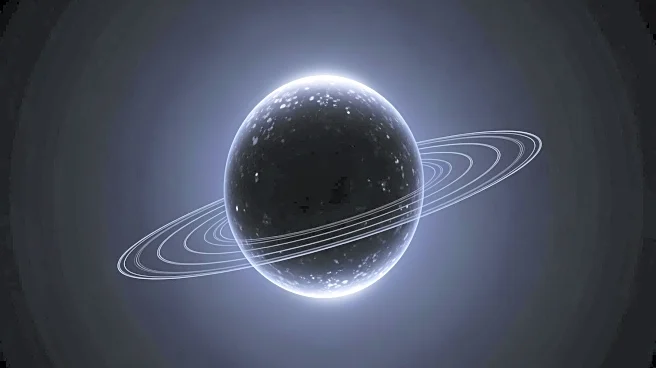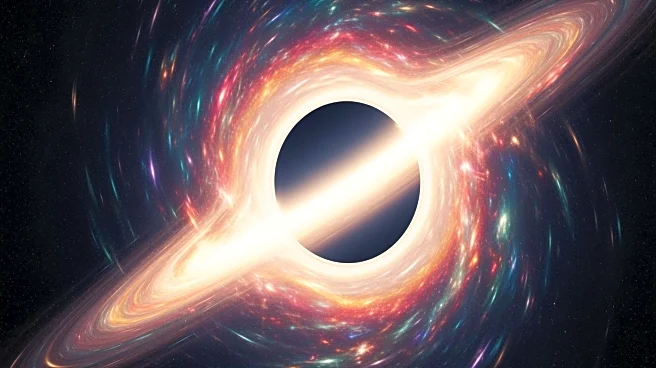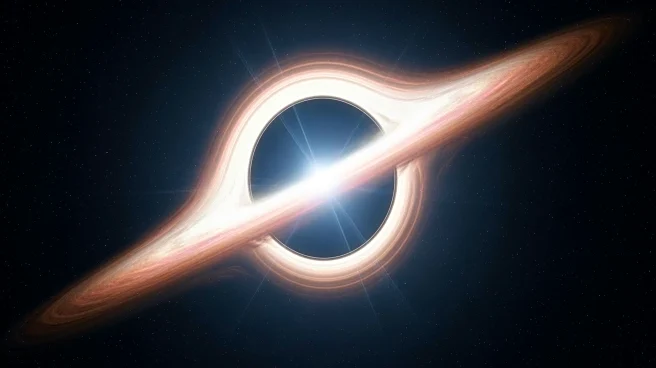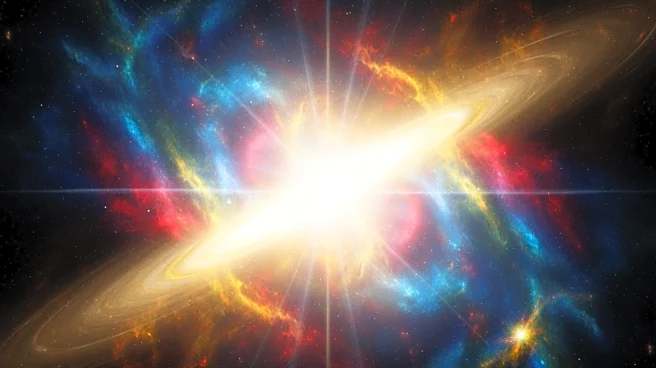What's Happening?
The James Webb Space Telescope (JWST) has made a groundbreaking observation of a peculiar object, QSO1, in the galaxy cluster Abell 2744. This object, observed just 700 million years after the Big Bang, contains a supermassive black hole with a mass equivalent
to 50 million suns. The discovery challenges existing theories about the formation of supermassive black holes, as QSO1 lacks a significant component of gas and stars, suggesting the black hole itself dominates the system. This finding could indicate that black holes, or galaxies, evolved earlier and with greater masses than previously believed.
Why It's Important?
The discovery of QSO1 by the JWST is significant as it provides new insights into the early universe's black holes, potentially reshaping our understanding of their formation. This could impact theories about the evolution of galaxies and black holes, suggesting that they may have formed earlier and more rapidly than current models predict. The findings could lead to a reevaluation of the processes that govern the growth of cosmic structures, influencing future astronomical research and theoretical physics.
What's Next?
Further studies are expected to explore the nature of QSO1 and similar objects, potentially leading to new models of black hole formation. Researchers may investigate whether these black holes formed from direct gas cloud collapses or other mechanisms. The JWST will continue to observe the early universe, providing more data to refine our understanding of cosmic evolution.
Beyond the Headlines
The discovery raises questions about the role of primordial black holes and dark matter in the early universe. It challenges the traditional view of galaxy formation, suggesting that black holes could have been the initial seeds around which galaxies formed. This could lead to new theories about the interplay between dark matter, black holes, and galaxy formation.
